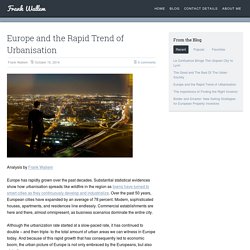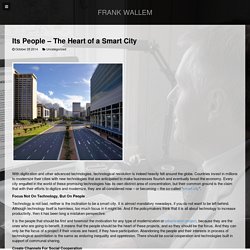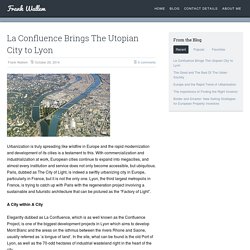

Utopia: seriously, good urban planning should aspire to it. The Australian television satire Utopia invited the public along for a laugh that architects and planners have been sharing for decades.

We laugh at the idea of utopia to disassociate ourselves from the disasters brought on by utopian visions. Le Corbusier’s is perhaps the most famous. He dreamt of people living in racks of council flats rather than old building stock on the ground. The only architects who have not gotten too savvy to dream of utopias are men in their nineties who missed the change in public opinion.
Jacque Fresco hopes one day that machines will build mega-structures while we humans relax. These examples are goofy-faced totems for a demon that we actually fear. Karl Popper cemented the association between utopianism and totalitarianism. Our urban landscapes have utopian pedigrees That’s fair enough if we’re talking about religious or ideological utopian visions. One reason was explained by architectural writers David Gosling and Barry Maitland. Velotopia: a new vision. Europe and the Rapid Trend of Urbanisation. Analysis by Frank Wallem Europe has rapidly grown over the past decades.

Substantial statistical evidences show how urbanisation spreads like wildfire in the region as towns have turned to smart cities as they continuously develop and industrialize. Over the past 50 years, European cities have expanded by an average of 78 percent. Modern, sophisticated houses, apartments, and residences line endlessly. Commercial establishments are here and there, almost omnipresent, as business scenarios dominate the entire city. Although the urbanization rate started at a slow-paced rate, it has continued to double – and then triple- to the total amount of urban areas we can witness in Europe today.
The Roots of European Urbanisation Urbanisation in Europe can be traced back to the Industrial Revolution, which transpired during around 1750 to 1850. It was the first half of the nineteenth century when the growth was at an unprecedented pace. Booming Real Estate Industry. The Good and The Bad Of The Urban Society. By Frank Wallem While it seems that the urban cities promise the realization of one’s dreams because of the presence of great opportunities, many are not aware that urbanization entails serious drawbacks.

In the fast-paced, modern world we live in today, every part of the globe is trying to keep up with the advancements, commercialization, and industrialization. This is why rapid urbanization is inevitable. While we know that urbanization can bring economic growth and stability, we should also be aware that there are various sectors and aspects that can be sacrificed and compromised in urban societies. Here is how urbanization can both be advantageous and perilous all at once. Its People - The Heart of a Smart City.
With digitization and other advanced technologies, technological revolution is indeed heavily felt around the globe.

Countries invest in millions to modernize their cities with new technologies that are anticipated to make businesses flourish and eventually boost the economy. Every city engulfed in the world of these promising technologies has its own distinct area of concentration, but their common ground is the claim that with their efforts to digitize and modernize, they are all considered now – or becoming – the so-called “smart city”.
Focus Not On Technology, But On People Technology is not bad, neither is the inclination to be a smart city. It is almost mandatory nowadays, if you do not want to be left behind. It is the people that should be first and foremost the motivation for any type of modernization or urbanization project, because they are the ones who are going to benefit. Create Channels For Social Cooperation. La Confluence Brings The Utopian City to Lyon. Urbanization is truly spreading like wildfire in Europe and the rapid modernization and development of its cities is a testament to this.

With commercialization and industrialization at work, European cities continue to expand into megacities, and almost every institution and service does not only become accessible, but ubiquitous. Paris, dubbed as The City of Light, is indeed a swiftly urbanizing city in Europe, particularly in France, but it is not the only one. Lyon, the third largest metropolis in France, is trying to catch up with Paris with the regeneration project involving a sustainable and futuristic architecture that can be pictured as the “Factory of Light”. A City within A City. Ideas for cities.